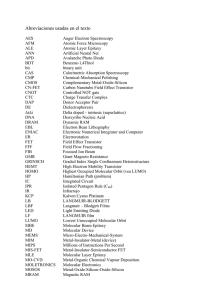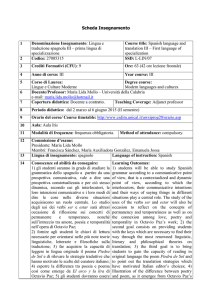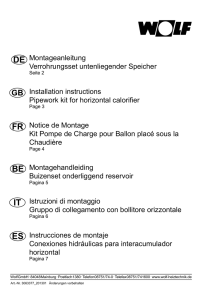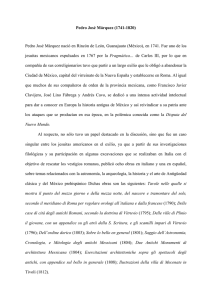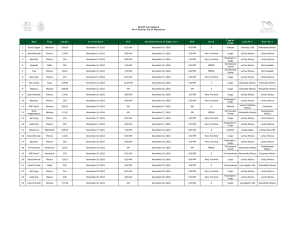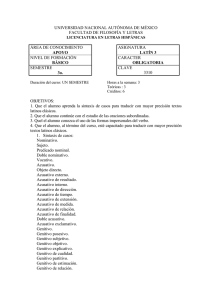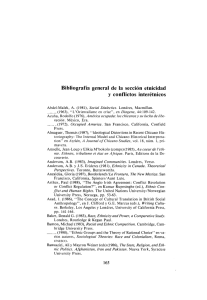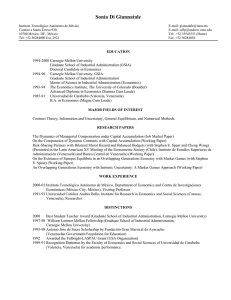New molecular materials based on crystal violet and n
Anuncio
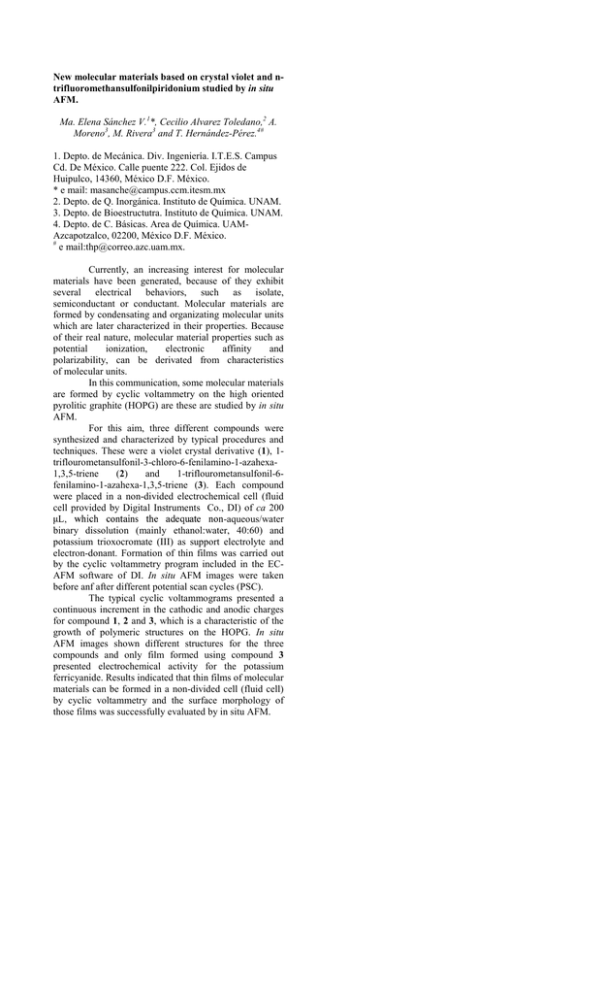
New molecular materials based on crystal violet and ntrifluoromethansulfonilpiridonium studied by in situ AFM. Ma. Elena Sánchez V.1*, Cecilio Alvarez Toledano,2 A. Moreno3, M. Rivera3 and T. Hernández-Pérez.4# 1. Depto. de Mecánica. Div. Ingeniería. I.T.E.S. Campus Cd. De México. Calle puente 222. Col. Ejidos de Huipulco, 14360, México D.F. México. * e mail: [email protected] 2. Depto. de Q. Inorgánica. Instituto de Química. UNAM. 3. Depto. de Bioestructutra. Instituto de Química. UNAM. 4. Depto. de C. Básicas. Area de Química. UAMAzcapotzalco, 02200, México D.F. México. # e mail:[email protected]. Currently, an increasing interest for molecular materials have been generated, because of they exhibit several electrical behaviors, such as isolate, semiconductant or conductant. Molecular materials are formed by condensating and organizating molecular units which are later characterized in their properties. Because of their real nature, molecular material properties such as potential ionization, electronic affinity and polarizability, can be derivated from characteristics of molecular units. In this communication, some molecular materials are formed by cyclic voltammetry on the high oriented pyrolitic graphite (HOPG) are these are studied by in situ AFM. For this aim, three different compounds were synthesized and characterized by typical procedures and techniques. These were a violet crystal derivative (1), 1triflourometansulfonil-3-chloro-6-fenilamino-1-azahexa1,3,5-triene (2) and 1-triflourometansulfonil-6fenilamino-1-azahexa-1,3,5-triene (3). Each compound were placed in a non-divided electrochemical cell (fluid cell provided by Digital Instruments Co., DI) of ca 200 -aqueous/water binary dissolution (mainly ethanol:water, 40:60) and potassium trioxocromate (III) as support electrolyte and electron-donant. Formation of thin films was carried out by the cyclic voltammetry program included in the ECAFM software of DI. In situ AFM images were taken before anf after different potential scan cycles (PSC). The typical cyclic voltammograms presented a continuous increment in the cathodic and anodic charges for compound 1, 2 and 3, which is a characteristic of the growth of polymeric structures on the HOPG. In situ AFM images shown different structures for the three compounds and only film formed using compound 3 presented electrochemical activity for the potassium ferricyanide. Results indicated that thin films of molecular materials can be formed in a non-divided cell (fluid cell) by cyclic voltammetry and the surface morphology of those films was successfully evaluated by in situ AFM.

